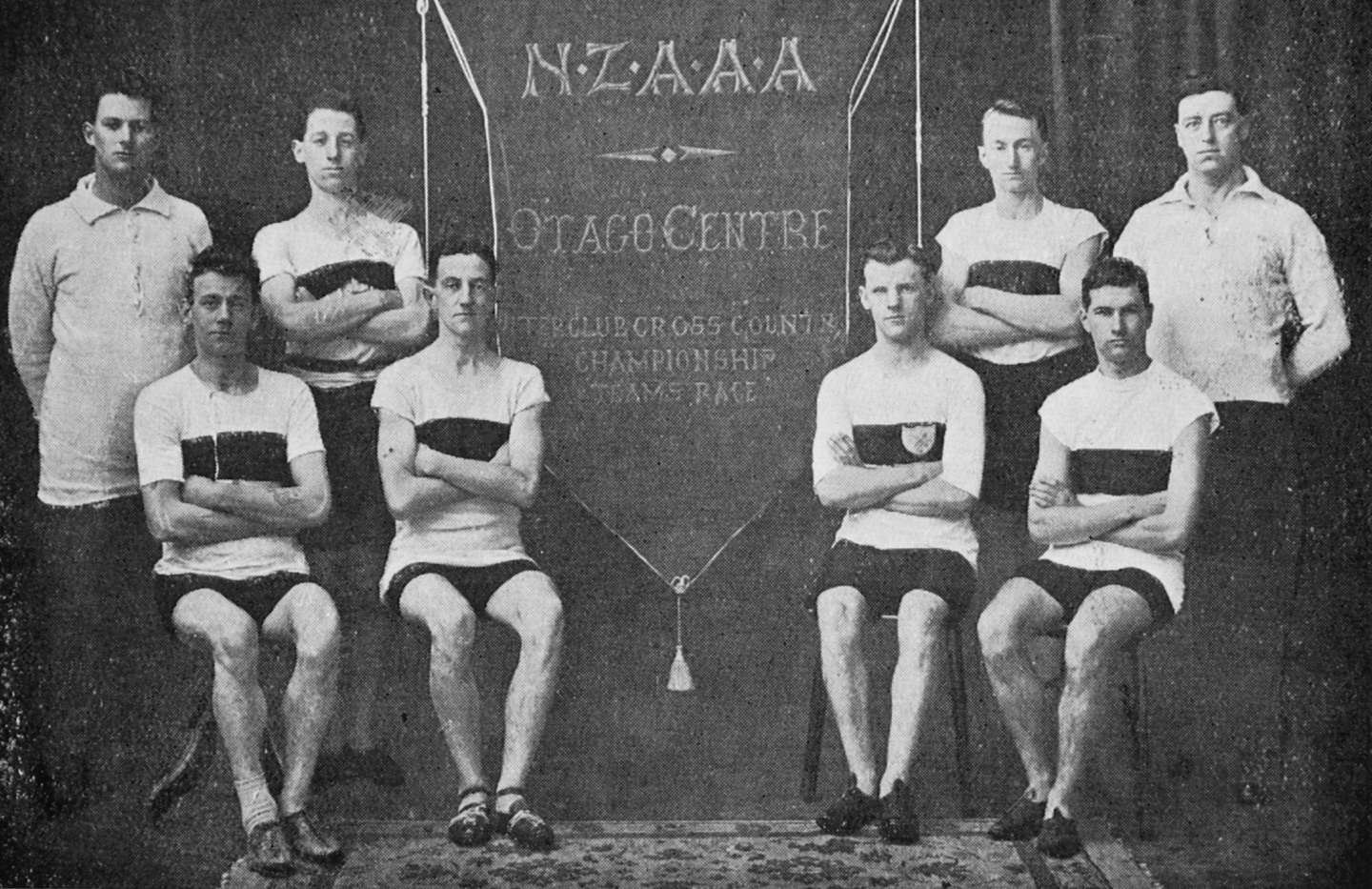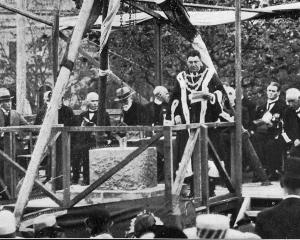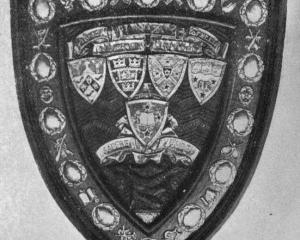The annual Otago 5-mile cross-country championship, which was run in ideal weather at Wingatui on Saturday afternoon, was again won by the Anglican club’s No 1 team. D.C. Lister (Civil Service club) breasted the tape first, after a run of 30min 55sec. There was but a handful of spectators present, the majority being friends of the runners, some 40 competitors, representing five local clubs, taking part. The few members of the Otago Centre of the New Zealand Amateur Athletic Association, who controlled the race, expressed regret that the majority of the office-bearers were apparently not sufficiently interested to attend. The course, which varied somewhat from that of last year, commenced opposite the members’ stand, and, running along the track, extended to the post-and-rail fence, and then on to Mr Fisher’s property, where the ground was very heavy. From Mr Fisher’s paddock the track crossed on to Mr Hazlett’s flat fields, where it was a little better, and, veering in a westerly direction, ran near the owner’s residence and on to the Janefield road, which was followed for about half a mile. It then crossed into Mr Gow’s property in returning to the racecourse, branching out on to the track at the half-mile post, and then round the track and up the straight to the starting point. The course, which had to be covered twice, contained no water jumps. Owing to the dips in the ground a portion of the race was invisible from the members’ stand. The well-known Caversham runner, C.W. Frye, kept doggedly to Lister's heels all the way, but could not hold the advantage. The third man, W.H.B. Hobbs, is 19 years of age. Immediately after the race Mr C.W. Clark (vice-president) handed over the banner to the Anglican Club, and, in congratulating it on its win, referred to the good sportsmanship shown during the race.
Some advice for motorists
Don’t push the car by the radiator. It is not strong enough.
Don’t show all your friends how the starting motor will drive the car. One day it will mutiny.
Don’t turn your head to speak to passengers when amongst traffic. Don’t take off the wheel unless the jack is quite safe.
Don’t attempt repairs that you know are beyond your skill.
Don’t be rude or sarcastic to the policeman. It increases the fine.
Don't forget that the storage battery is less efficient in the cold weather, also a cold engine is much harder to start. Benzine is also harder to vapourise in winter. All these make starting difficult. Keep the battery well up and prime the engine these cold mornings.
Retracing Maori routes
Where did the old Maori track run from Otakou to Henley? It is suggested it was up the high ground of the Upper Junction, then down the Woodhaugh Valley to Maori Hill and Wakari or Halfway Bush, then along the ridge past Mount Grand to Abbotsford. The cone of Saddle Hill would be a good landmark, and would be approached from where the road now goes up through Fairfield and over the northern shoulder of Saddle Hill. The great boggy Taieri Plain would force travellers to keep to the easiest slopes of Saddle Hill and so down to Henley. Of course, there would be local tracks to the mouth of the Kaikorai Stream and to Brighton and other coastal kaikas. From Taieri Mouth, there was a well-recorded beach route to Port Molyneux — the road by which Raki took Mr Tuokett in 1844. — ODT, 31.7.1922













